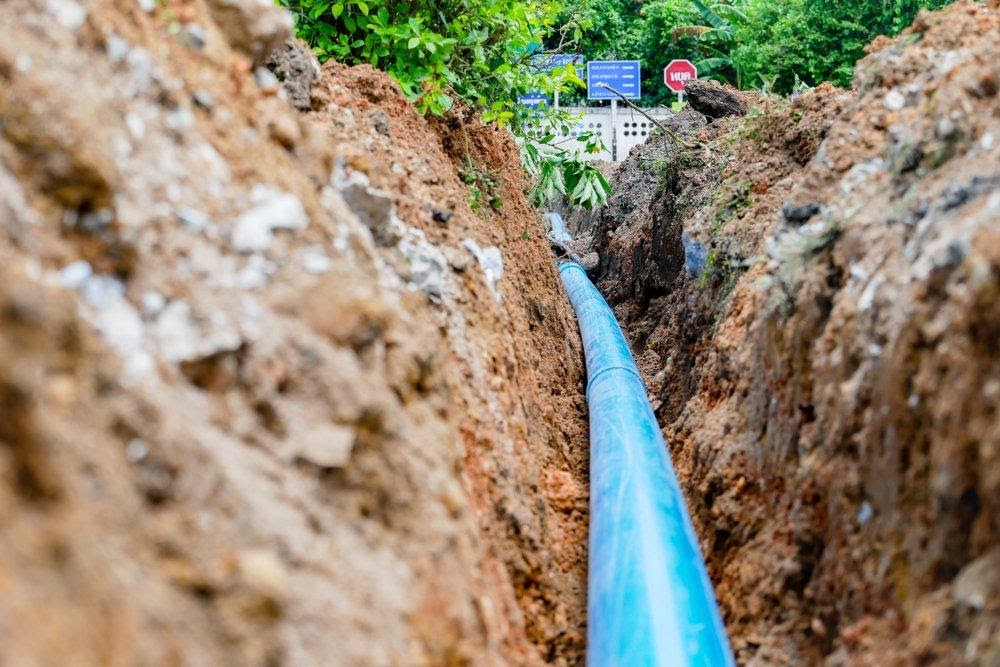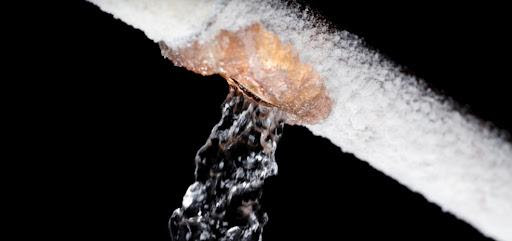How far down your water pipes should go? The installation of water pipes must be according to the 2018 International Plumbing Code, including the appropriate depth of the water pipes. IPC 2018 section 305.4 addresses the depth of the water pipelines. The base code says the water service pipe should run at least six inches (152 mm) below the frost line and not less than 12 inches (305 mm) below grade.
The installation of pipes depends on your location, the anticipated loads in the area, or the types of soil underground. You may have to dig deeper and put additional bedding material to protect your pipes. In the desert area, you can be at the minimum, but as you go further north, you may have to add some more depth to prevent water lines from freezing, but in the end, it is best to check with the local building authority because the actual number might be different to your location.

Contents
How deep are water lines buried in the US?
Deciding on the depth of how deep a water line needs depends on your geographical location. In the United States, ideally, water pipes must be buried below the frost line or at least as deep as your building codes require. However, it is still best to call 811 first before you start digging or contact your municipality’s building permit department or the water company.
811 is the national call-before-you-dig phone number in America. Requests to identify the buried utilities so that you won’t accidentally hit any underground utility line. Once all utilities have identified all buried lines, carefully start digging around utility marks. Consider relocating projects that are close to buried utilities to prevent future line problems. Additionally, consider the frost line penetration map in the U.S before installing water pipes. Frost can be detrimental to the footing and foundation of the pipes because frozen water expands its volume by 9%.
How deep are water lines buried in the UK?
The U.K. uses Blue MDPE pipe for their water utility. This type of pipe must run at least 750mm to a maximum of 1350mm below finished ground level and at least 350mm away from other utilities (e.g., gas or electricity). Cut the trench to at least 250mm, including the external diameter of the pipe. The pipe should be laid to a flat and smooth trench bed, free of rocks or rough objects that can damage the line. Otherwise, you’ll need to excavate further to a minimum of 100mm. Lay a bed of sharp sand before you can lay down the pipe. Fill with a 100mm layer of sand and then with soil. The soil will be compacted firmly every 300mm. Marking tape is laid over the length of the pipe run at a minimum of 300mm above the water pipe.

How deep are water lines buried in Australia?
The Australian water pipes standard depth is comparatively similar to other countries, such as the US and the UK. The actual depth varies depending on the location or the existence of gas pipes in an area. According to the Australian Government, the minimum depth should be 300 mm or more. It may change if a gas pipe is present in the area. On average, the gas pipes in Australia are about 200mm to 600mm beneath the surface.
It is best to have an updated Dial Before You Dig Plan on-site before any installation and compliant with the regulation AS5488 or Classification of Subsurface Utility Information (SUI). A comprehensive risk assessment is necessary before beginning any excavation work.
Why do water lines have to be buried so deep?
The standard depth for water lines is at least six inches (152 mm) below the frost line and not less than 12 inches (305 mm) below grade. As the climate varies from one place to another, water lines must be installed according to the minimum requirement to prevent damage from freezing. Water expands by 9% when it is frozen and may be detrimental to the water lines. In more dry areas, water lines can be installed at the minimum requirement, but it can be a little bit deeper as you go north.

What happens when you hit a buried water line?
The accidental hit of water lines may have happened if you failed to identify their location. If this happens, it can cause a lot of inconvenience and a considerable amount of money to fix the pipes. Water pipes have a high-pressure flow. Accidental hits will eject debris and flood the area, or worst-case scenario, somebody can get electrocuted if there’s an electric current in the water. To avoid this from happening, locate and mark all utility lines before beginning any excavation project.
Can you locate buried water lines if the line is damaged?
Water leaks can happen due to broken pipes caused by freezing or corroding pipes. It is hard to find underground water leaks. In this case, private utility locators can help you locate underground water lines leaks, which involves specialized equipment such as:
- Ground-Penetrating Radar (GPR)
- Electromagnetic Conductivity (EM) devices
- Acoustic Methods
- Ultra-High Radio Frequencies